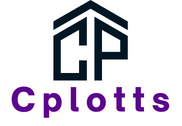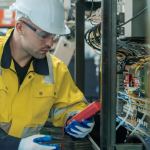In the contemporary world of architecture, LEED (Leadership in Energy and Environmental Design) has become a prominent term. This highly respected certification is a globally recognized symbol of sustainable achievement and leadership. Let us delve into the world of LEED, its pros & cons, and its role in green building development.
The LEED Certification
Leadership in Energy and Environmental Design, or LEED, is an internationally recognized green building certification system, developed by the U.S. Green Building Council. It provides a framework for creating healthy, highly efficient, and cost-saving green buildings.
This might interest you : How to Mitigate the Impact of Construction Noise in Dense Urban Real Estate Projects?
LEED certification is a globally recognized symbol of sustainability achievement and leadership. It’s the most widely used green building rating system in the world and available for virtually all building types.
The Leed Rating System
LEED certification is based on a point system. Points are awarded for sustainable construction methods, energy and water usage, the building’s location and access to public transport, and the materials used in construction. The more points a building project earns, the higher its LEED rating will be.
Also read : How to Manage the Logistics of Building Materials Supply for Remote Real Estate Developments?
There are four levels of LEED certification: Certified, Silver, Gold, and Platinum. Platinum is the highest level, awarded to projects that meet stringent environmental and sustainability criteria.
The Benefits of Implementing LEED Certification
The primary goal of implementing LEED certification is to encourage the development of more sustainable buildings. However, a LEED-certified building also presents numerous benefits that transcend environmental concerns.
Enhanced Environmental Performance
The core benefit of implementing LEED certification is the reduction in environmental impact. LEED-certified buildings are designed to lower energy and water use, reduce greenhouse gas emissions, improve indoor environmental quality, and manage resources more efficiently.
Increased Property Value
Research has shown that LEED-certified buildings often have higher property values compared to conventional buildings. This is due to the increased demand for green buildings from consumers who are becoming more environmentally conscious.
Healthier Indoor Environment
LEED-certified buildings are designed with a healthier indoor environment in mind. The use of non-toxic materials and improved ventilation systems can lead to improved air quality, better daylight access, and a healthier overall environment for occupants.
The Challenges of Implementing LEED Certification
While LEED certification offers numerous benefits, it also presents several challenges that must be tackled during the design and construction process.
Higher Initial Costs
Implementing LEED certification often involves higher initial costs. This is due to the use of premium materials and technologies, engaging green building consultants, and the rigorous documentation required for certification.
Complex Certification Process
The LEED certification process can be quite complex and time-consuming, particularly for large developments. It requires thorough documentation, careful planning, and sometimes multiple submissions to the certifying body.
Need for Specialized Knowledge
Implementing LEED certification in large developments requires specialized knowledge of sustainable construction practices. This might necessitate hiring additional consultants or training existing team members, which could increase project costs.
How to Overcome These Challenges?
Overcoming the challenges of implementing LEED certification in large developments requires careful planning, a long-term perspective, and a committed team.
Planning for Long-term Benefits
While LEED certification may involve higher initial costs, it’s essential to consider the long-term benefits. Lower operating costs, higher property values, and potential tax incentives can offset the initial investment over time.
Building a Committed Team
Successful implementation of LEED certification requires a dedicated team. This includes architects, engineers, contractors, and owners who are committed to sustainability and understand the value of LEED certification.
Seeking Expert Help
To navigate the complex certification process, one can seek help from green building consultants. These experts can guide through the certification process, ensuring all requirements are met efficiently.
Navigating the waters of LEED certification can be challenging, but with planning, commitment, and the right team, it’s possible to incorporate sustainable practices into large developments. The rewards – both environmental and financial – make this a worthwhile investment for any developer. The future is bright, and it is greener.
The Impact of LEED Certification on the Real Estate Market
The real estate market has been significantly influenced by the rise of green building and the LEED certification. This trend goes beyond corporate sustainability initiatives and has entered the mainstream of the property market. Let’s discuss how the implementation of LEED certification impacts the real estate sector.
Attracting Tenants and Investors
LEED-certified buildings provide a competitive advantage in the real estate market. They often attract tenants and investors who are environmentally conscious or looking for energy-efficient buildings. This is due to the increasing demand for green buildings and the potential for lower operating costs.
Higher Rental Rates
Studies have indicated that LEED-certified buildings can command higher rental rates compared to non-certified buildings. This is attributed to the healthier indoor air quality and general better living conditions provided by these buildings. In fact, in many markets, tenants are willing to pay a premium for these benefits.
Better Return on Investment
From an investment perspective, LEED certification can enhance a property’s value and provide a better return on investment. This is particularly relevant for large developments, where the scale of the project can lead to significant energy savings over time. Moreover, several studies have shown that the value of LEED certified buildings appreciates faster than conventional buildings, making them an attractive investment.
Conclusion: The Future is Green
In summary, implementing LEED certification in large developments offers several benefits, including enhanced environmental performance, increased property value, and a healthier indoor environment. While challenges exist, such as higher initial costs and the need for specialized knowledge, these can be overcome with careful planning, a dedicated team, and the help of green building consultants.
In addition, the impact of LEED certification on the real estate market is substantial. It not only attracts tenants and investors but also commands higher rental rates and delivers better returns on investment, making it a compelling choice for large-scale developments.
As the world continues to grapple with environmental challenges, it is clear that the future of construction is green. LEED certification plays a crucial role in this transition, guiding the construction industry towards more sustainable practices. The integration of LEED certification in large developments is not just a trend, but a shift towards a more sustainable and responsible approach to construction. The benefits of this shift, both environmental and financial, are clear. Ultimately, the success of this shift will depend on the commitment of all stakeholders to embrace these changes and strive for a greener future.











